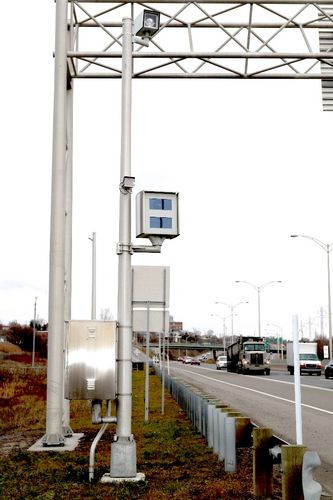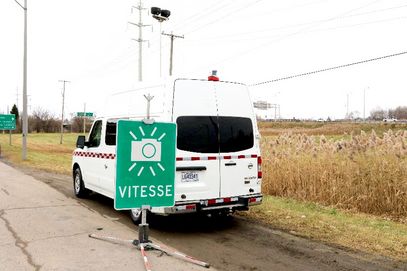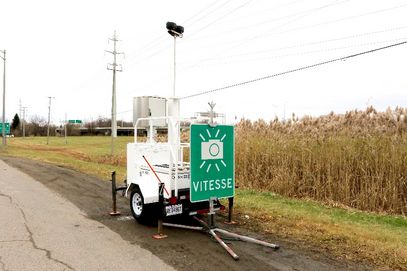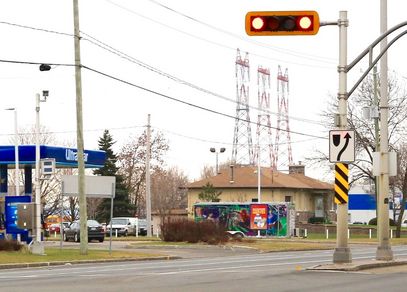Photo radars are installed at targeted locations to improve safety on the roads. Photo radars detect speeding or failure to obey a red light.
In case of offence
When the device detects a vehicle speeding or running a red light, the device takes photos of the vehicle and its registration plate.
It also records:
- the location, date and time of the violation
- the vehicle’s position
- the vehicle’s speed
- the colour of the traffic light
The photos are encrypted to ensure confidentiality. The vehicle’s interior is masked in the photographs to respect the privacy of its occupants.
The photos are sent to the Centre de traitement de la preuve (CTP), which is under the responsibility of the Sûreté du Québec. Each photo is analyzed by a law enforcement officer to determine if an offence has occurred.
If an offence is confirmed, the offender receives a statement of offence and a fine by mail within 30 days of the date of the offence.
For more information on the fines you face in case of an offence, refer the document Speeding — Fines and demerit points of the Société de l’assurance automobile du Québec.
No demerit points will be entered on your record, however, as photo radars can identify a vehicle but not its driver.
Email scams
Statements of offence related to photo radars are never sent by email. Ignore any email instructing you to pay a fine online.
Guilty or not guilty
If you receive a statement of offence, you must submit a plea of guilty or not guilty within 30 days.
If you were at fault during the offence, you must enter a plea of guilty and pay the claimed fine, fees and contribution. The file will be closed, and the legal proceedings, completed.
If you were not the driver of the vehicle, you can indicate that fact and enter a plea of not guilty.
For more information, visit the page Statement of offence and notice of judgment.
Photo radar objective
The purpose of photo radars is to improve road safety. Since drivers are given advance notice when photo radars are present, they tend to change their behaviour for fear of being intercepted. A decrease in the number of accidents is recorded where these devices are installed.
Depending on the type of device, the number of accidents is reduced by:
- 29% for fixed photo radars
- 28% for red light monitoring devices
- 12% for mobile photo radars
Fines and fees resulting from violations detected by photo radars are credited to the Highway Safety Fund. These sums may only be used to fund road safety and victim assistance measures or programs.
Types of photo radars
In Quebec, three types of photo radars are used:
- fixed photo radars
- mobile photo radars
- red light monitoring devices
Mobile photo radars
Mobile photo radars can be moved from one site to another.
They can be:
- installed in a van
- installed on a trailer
- placed on a tripod on the side of the road
Once installed, they measure vehicle speed and take photos of each vehicle that exceeds the speed limit.
Red light monitoring devices
These devices are installed at intersections with traffic lights. They take photos of vehicles that do not obey red lights. If the speed control function has been enabled on the device, vehicles that exceed the speed limit will also be photographed.
Photo radar deployment
To implement each phase of deployment, various experts from all government and municipal partner organizations are performing a variety of activities including:
- designing new deployment strategies
- choosing which types of devices to use
- choosing the number of devices to acquire
The next deployment phase is in preparation. For more information, refer to the Plan d’action en sécurité routière 2023-2028 (PDF 671 Kb) (in French only).
See also
Last update: November 1, 2023






